David Krietor has always been a trusted, steady hand.
In mid-1991, the City of Phoenix recruited Krietor from the City of Syracuse’s Chamber of Commerce to lead the newly created “Economic Development Executive Office.”
The transplant quickly emerged as an easy-going voice that shaped a community renaissance, adding residential housing, culture, hospitality, and services to Downtown over three decades.
Every city has public servants working behind the scenes with elected officials to move the community forward, and Krietor is one such figure.
Once established, he built a stellar reputation and impressive resume as the City of Phoenix’s Community & Economic Development Director, Sky Harbor International Airport’s Aviation Director, Mayor Phil Gordon’s Chief of Staff, Phoenix Bioscience Core’s Executive Director, and even as Downtown Phoenix Inc.’s founding President & CEO, which includes Phoenix Community Alliance (PCA) as the membership and advocacy affiliate.
PCA was built on the foundation of industry professionals who all shared the same goal: to use their expertise to benefit the Greater Downtown Phoenix community.
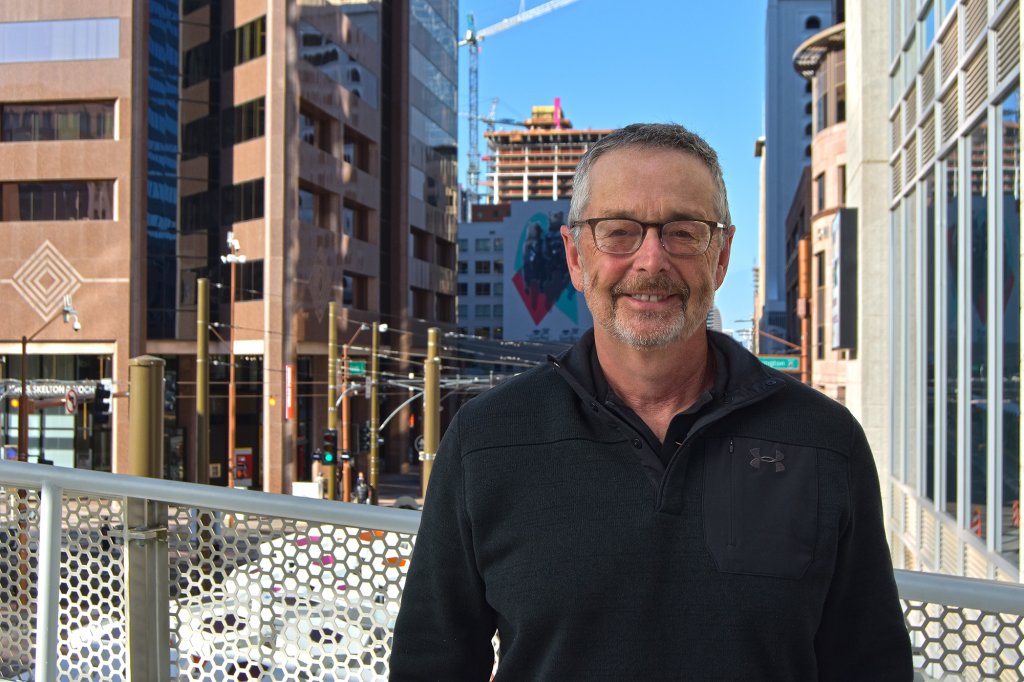
Downtown Phoenix Inc.’s founding President & CEO David Krietor pictured outside the Downtown Phoenix, Inc./Phoenix Community Alliance offices. Across more than three decades, Krietor has fostered trusted reputations for local institutions, including Sky Harbor International Airport, as their Aviation Director, and the Phoenix Bioscience Core, as Executive Director. (Photo by Taylor Costello)
PCA: What was your impression of Downtown and Phoenix, having been from the East Coast?
David Krietor: It was pretty slim Downtown.
I didn’t understand the effect the suburbanization of Phoenix had on Downtown. The center of the city never had a mature, urbanized Downtown. Other major cities with the same suburban thing going on had the bones of a more mature, big-city urban center. We needed more scale.
If you look at speeches [former Downtown Phoenix Partnership Executive Director] Brian Kearney used to give, he said, “Downtown was a collection of things, and there was no connectivity.” While collecting some important “things,” without connectivity and a residential element, we struggled to create a “community.”
When trying to establish that people would live Downtown, two major pilot projects were Artisan Village and Roosevelt Square. The city assembled the land for both projects, and pioneering developers Eric Brown and [future Co-Chair of PCA’s Hance Park Fundraising Committee] Tim Sprague helped make them happen.

David Krietor is officially recruited from the Greater Syracuse Chamber of Commerce to lead an office within the City of Phoenix’s Community and Economic Development Department on June 15, 1991. (Courtesy of the Arizona Republic Archives)
PCA: What was a notable project you guided through as the City of Phoenix’s Community Economic Development (CED) director?
Krietor: The city, under Mayor [Terry] Goddard’s leadership, initiated a major bond issue in 19887 that solidified the [Phoenix] Art Museum, the [Arizona] Science Center, the Herberger [Theater], and the restoration of the Orpheum [Theatre].
As CED Director, I had the privilege of working on the restoration of the Orpheum Theatre, which recently celebrated its 95th anniversary.
Before the new Phoenix City Hall was built, the theatre shared the site with a drive-thru Taco Bell and parking lot. In 1984, Downtown developer Jim Kaufman sold the historic Orpheum Theatre to the City of Phoenix, recognizing the resources they could devote to its restoration rather than a private developer.
The design of the City Hall complex by architect Langdon Wilson incorporates the theatre into its master plan, which allowed new utility lines to act as an umbilical cord, bringing new life to the old staple. The theatre reopened on January 28, 1997, after a 12-year, $14 million restoration process.
The Junior League [of Phoenix] stepped in and helped create the community awareness that we could lose a cultural icon. [The City] got some money to stabilize it in the 1988 bond issue but did not have a financing plan to complete the restoration.
[My wife] Kate and I had our wedding reception in the historic Landmark Theatre in downtown Syracuse, where I was responsible for downtown redevelopment, so I had a strong bias to get the Orpheum completed.
The city had a dedicated revenue stream that supported the convention center. We convinced the powers that be to divert some of those resources to the Orpheum to restore it. As we built City Hall, we expanded the stage house of the Orpheum [from 2,676 to 4,747 square feet] so that you could have a real performing arts stage.
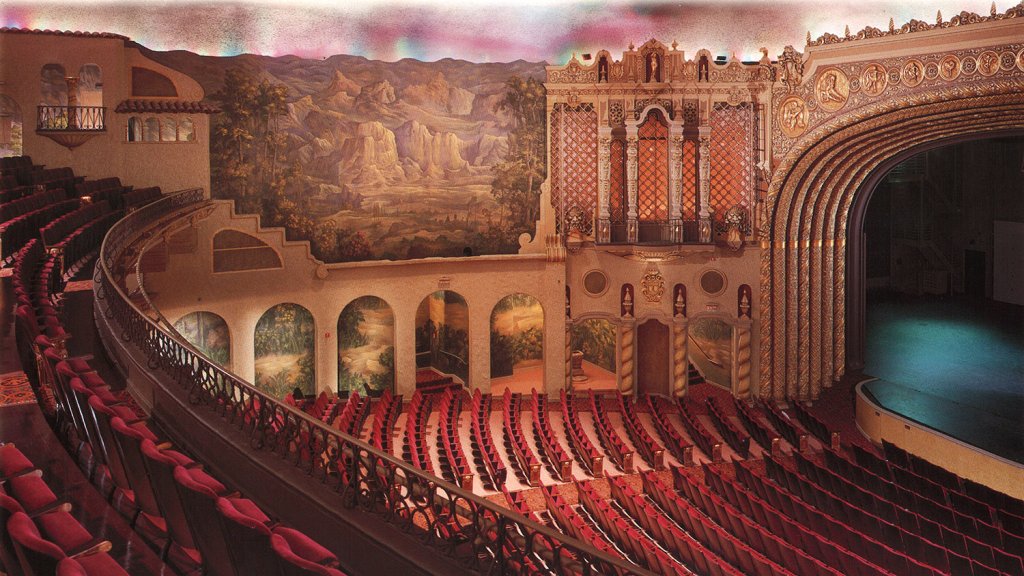
Beginning in August 1995, artisans restored the Baroque ornate finishes of the Orpheum Theatre’s interior, often from multiple decades of paint. (Courtesy of Orpheum Theatre Foundation/Gary Quesada)
PCA: Was there ever a project you would’ve liked to see that didn’t happen?
Krietor: Every meaningful, privately developed project eventually happened or at a larger scale. In my mind, there were a few things that I wish we had been more aggressive about.
The Musical Instrument Museum (MIM) would have been a great addition to Downtown. Mayor Gordon and I had some preliminary discussions with them, but the site that would have worked was committed to the Phoenix Bioscience Core. The MIM is incredible, and perhaps we should have found an alternative.
Since the first building in the core, the University of Arizona’s Health Sciences Education Building broke ground in 2010, the Phoenix Bioscience Core (PBC) has grown to cover 1.6 million sq. ft. and ranks as the first in the nation of life science job growth among emerging markets.
Within the thriving 30-acre life science and innovation hub, Arizona’s three major universities — Arizona State University (ASU), University of Arizona (UArizona), and Northern Arizona University (NAU) — three of the five major hospital systems, and public and private research collaborate to produce the next generation of medical professionals and translational research for the state.
In early January, an adoption of an intergovernmental agreement with the City of Phoenix and the Arizona Board of Regents allowed the next stage of the campus master plan to commence, which included ASU Health, a new medical school, and the University of Arizona’s Center for Advanced Molecular and Immunological Therapies (CAMI).
Learn more about the PCA’s connection to the origins of the core here.
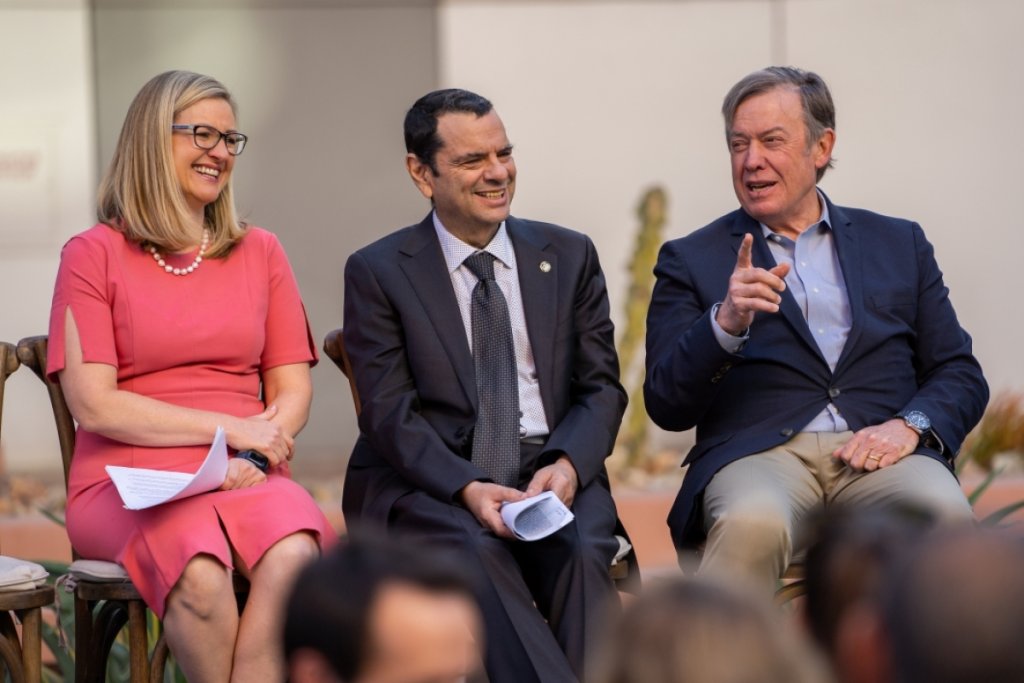
In spring 2023, the former Taylor Place was renamed Gordon Commons, in honor of Mayor Phil Gordon and his effort to create the ASU Downtown Phoenix campus. (Courtesy of Arizona State University/Samantha Chow)
PCA: How were you acquainted with Former Mayor Phil Gordon to eventually become his Chief of Staff?
Krietor: I met Phil during his development days. He had done a number of Downtown historic restoration projects. He was part of a small group of true believers focused on the center of the city before he got involved in politics. Then [Mayor] Skip Rimsza hired him as Deputy Chief of Staff. That’s how Phil first got into City Hall.
I had moved on from CED to Aviation when Phil asked me to work with him in the Mayor’s office. In Phoenix, it is always good to have someone from city management working with the Mayor day to day.
Mayor Gordon had incredible vision. He understood you only have so much time in elected office, and if you don’t use that time to improve the city, build things, and create lasting institutions, it is a wasted opportunity.
Phil was gutsy and, along with President Crow, effectuated one of the most important deals ever in Phoenix. He saw the ASU downtown campus as a way to transform Downtown. Having a front-row seat to that partnership was worth the price of admission.
A deal is finalized to expedite the redevelopment of the area: The city front-ended $100 million to buy land and begin building. At the same time, the university assumed all operating expenses from relocating their colleges from Tempe and operating the new campus. The 2006 General Obligation (GO) Bond paid back the city’s initial investment and facilitated the build-out of the campus.
Gordon had the will to bet his political future on this. He convinced city management to do it and got support from the rest of the city council.
When ASU decided to come, it created a perception that things would move faster.
PCA: What circumstances allowed PCA to enter into the affiliation agreement with Downtown Phoenix, Inc. (DPI) when DPI was being restructured as the umbrella organization of DPP in 2013?
Krietor: From the beginning, PCA had incredibly powerful and committed business leadership.
Dick Snell, the [Past] Board Chair of PCA, was the CEO of Pinnacle West. When I arrived, PCA’s executive director was Marvin Andrews, [the City of Phoenix’s] retired city manager. And [Jerry] Colangelo was a force of nature.
PCA and DPP leadership had the vision to understand that Downtown was changing to align the organizations under the DPI umbrella. Mo [Stein], Diane Haller, Mike Lieb, and Larry Lazarus sat around a table, with Mike Ebert, Don Brandt, and me hammering out the affiliation agreement. And great leadership by Neil Irwin, Ron Butler and Mayor [Greg] Stanton.
I also want to give a shout-out to the “Urban Pioneers” on Roosevelt: Greg Esser, Cindy Dach, Kimber Lanning, Jim McPherson, Carla [Wade] Logan, Wayne and Alison Rainey, and many others who in their own way, had a powerful influence on the evolution of Downtown.
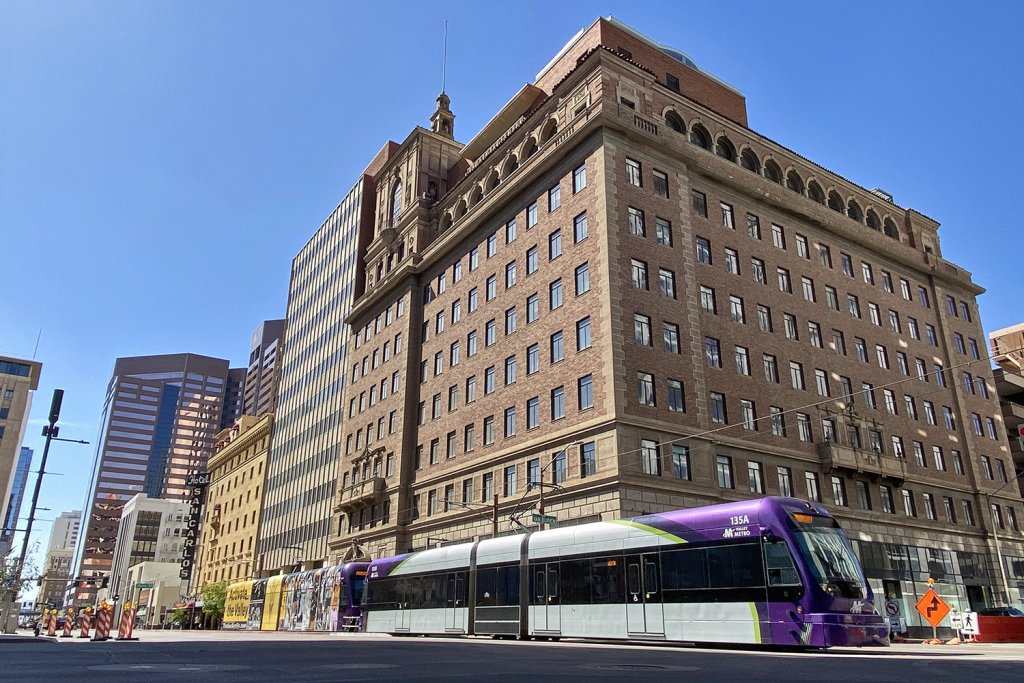
Prior to 2016, Downtown Phoenix, Inc. (DPI) was located on the 14th floor of the US Bank Tower. The search for a new space focused on Downtown retail space in the “middle of the action” with easy accessibility. Prior to choosing CityScape, the ground floor of the 1928 Security Building and Arizona Center were several of the sites briefly considered. (Photo by Taylor Costello)
PCA: How did the affiliation agreement coalesce with you being offered the job to lead this reconstituted organization?
Krietor: I think I ended up in the DPI position because I had a solid long standing working relationship with all of the players. While not everyone was in agreement on all of the DPI organizational details on day one there was a lot of trust.
I remember a day when there was a slight difference of opinion on a PCA-related issue with Mayor Stanton. He and I hashed it out only wearing towels in the locker room at the Downtown Y[MCA]. Fortunately, no one had a cell phone.
PCA: Why was PCA important within that new organizational umbrella structure?
Krietor: Because of the way DPI and DPP were structured, you never would have the broad-based membership structure [that offered ways to participate as a stakeholder in Greater Downtown Phoenix]. None of the other successful big city downtown organizations have done it without having a membership organization. PCA had those bones.
After the organization got set up, Downtown started to take off. It was invigorating and exciting. After six years it felt like it was time for new leadership with fresh ideas to take the wheel.
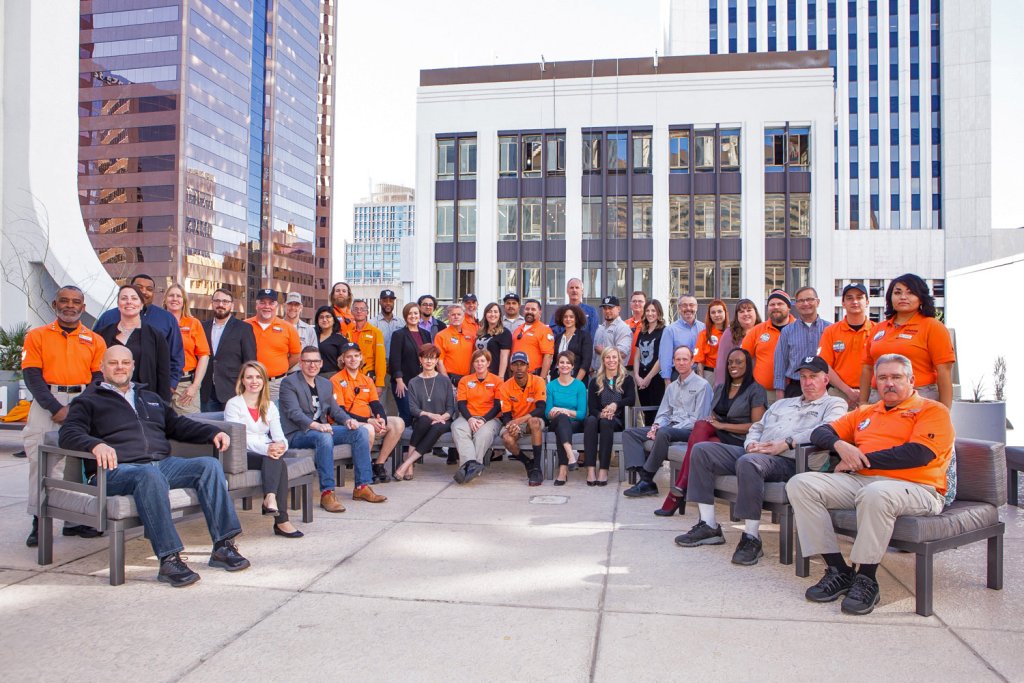
The staff of Downtown Phoenix, Inc., including Phoenix Community Alliance (PCA), on the rooftop lounge of Renaissance Phoenix Downtown Hotel, pictured Monday, January 29, 2018. Krietor is the seventh person on the right, in the back row. (Photo by Zee Peralta)
After over four decades as a leading local voice behind revitalizing things of different shapes and sizes, Krietor is finally enjoying retirement.
For the first time since 1971, he hasn’t had to fill out a W2.
Although he only observes from the outside the institutions he helped establish, he takes enormous pride in a new generation of leaders who ascended under him and the meaningful anniversaries that have happened.
In 2023, Downtown Phoenix Inc. celebrated its 10th anniversary, and PCA celebrated its 40 years of impact. Both organizations are as healthy as ever.
And with that stability, who needs the credit?







